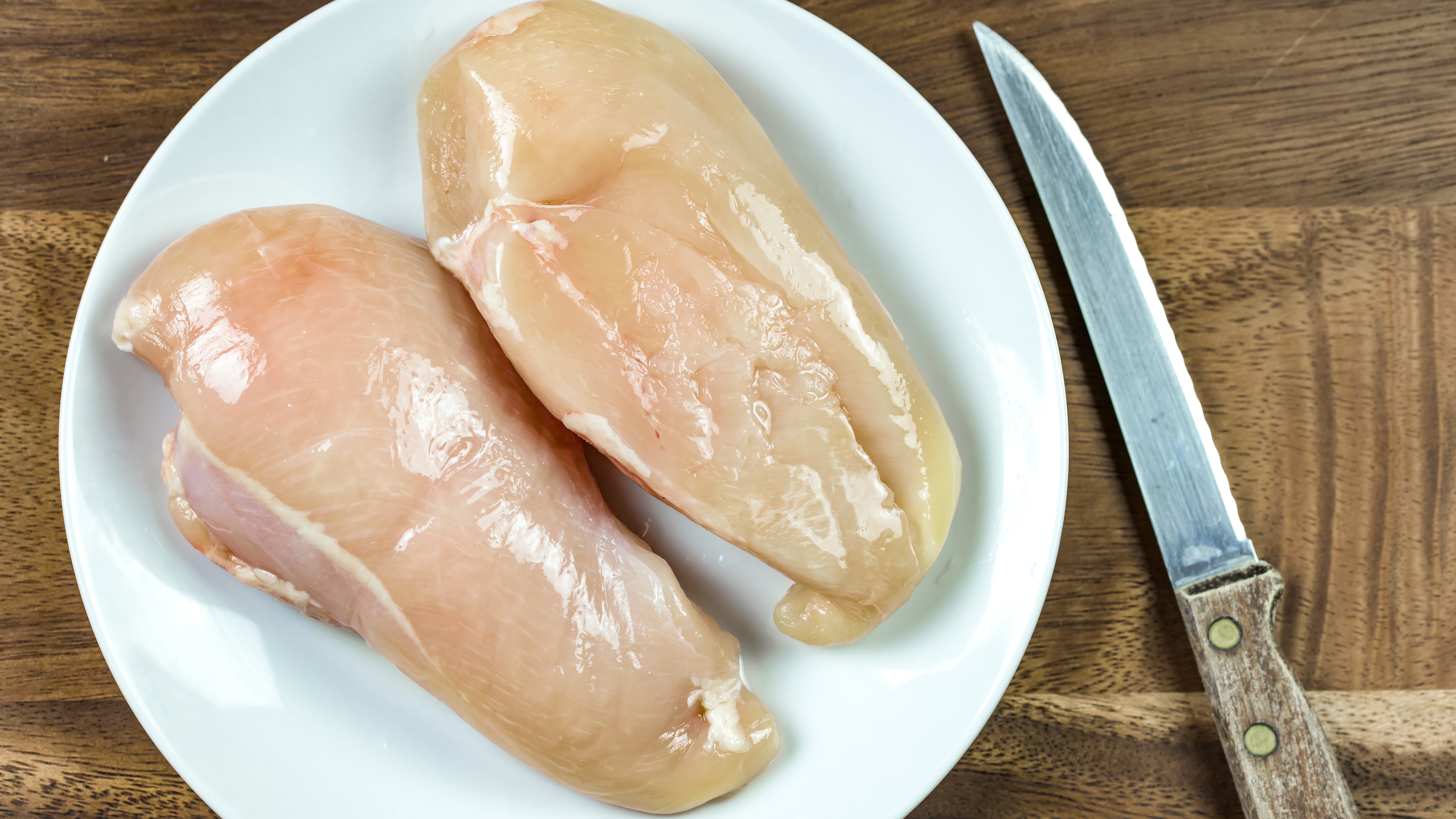Why Do We Eat Raw Fish And Beef, But Not Raw Chicken?
Our staff discussions at The Takeout go to weird places sometimes. It doesn't matter how the topic of eating raw chicken recently came up, but it did, and we had quite the in-depth conversation about the prospect of eating raw chicken.
Editor-in-chief Kevin Pang seemed the least squeamish at the prospect; after all, he argued, Americans eat sushi, beef tartare, and raw oysters. So why not poultry? Chicken sashimi can be found at numerous restaurants in Japan, he pointed out, and there's not a wave of salmonella poisoning there. I could see his points, but then I thought of the squawking, messy, often kinda stinky hens in my own backyard. They don't look appetizing. They poop everywhere. Eating them raw doesn't seem safe, I thought.
But what do I know, right? I wanted to satiate our office's raw chicken curiosity, so I called the experts.
Martin Bucknavage, senior food safety extension associate at Penn State University's Department of Food Science, tells me he wouldn't recommend eating raw chicken, calling it "very risky" due to the "sufficiently high" presence of pathogens. He says chicken is different from fish or beef because of the meat's structure; raw fish and beef generally come from whole-muscle cuts, which help prevent surface contamination. In the case of beef, whole-muscle cuts can be surface-treated with very hot water, lactic acid, or other liquids to reduce microbial contamination. "Depending on the strain, salmonella can be highly infectious, requiring only a small number of cells to be present to cause illness. So it can be extremely difficult to extract meat without having pathogens present," Bucknavage says. Also, he reminds me, eating raw seafood and raw beef is not without risk, either.
But chicken is top-of-the-list when it comes to those risks, according to Hilary Whitman, an epidemiologist with Centers For Disease Control's Division of Foodborne, Waterborne and Environmental Diseases. She tells me chicken is the number-one food vehicle for number of outbreak-associated illnesses that the CDC tracks. And when you consider that reported outbreaks represent only an estimated 3-5 percent of all food-borne illnesses, that's a lot of sick people: the CDC counted more than 3,000 outbreak cases linked to chicken between 2009 and 2015, which Whitman calls "a gross underestimation" of total illnesses. Not freaked out enough yet? Whitman says as many as 20 percent of packaged raw chicken sold in the U.S. tests positive for salmonella, which doesn't even take into account campylobacter and other contaminants.
Okay, the risks are now loud and clear to me. But if raw chicken has the potential to seriously sicken people, why do some Japanese restaurants serve it? (Some also serve fugu, a nontoxic part of a poisonous blowfish, so perhaps the Japanese just like a bit of danger with their dinner.) I read numerous blogs and websites documenting the experience of eating raw chicken at various restaurants in Japan, including this one from Madison, Wisconsin-based travel author Kevin Revolinski. He spoke to The Takeout and told me the chicken's texture "wasn't much different from raw tuna" and its flavor was "almost bland without the dipping sauce." He did say he Googled "salmonella incubation period" after the meal.
Scott Malloy, a former chef at Chicago's Momotaro, is as Japanese-food-obsessed as anyone gets, and he elaborated a bit on the context of raw chicken in Japan. He tells me it's generally served at yakitori and izakaya restaurants with ponzu or soy sauce and wasabi; some restaurants also lightly torch the outside of the chicken to briefly sear it. Raw chicken offal is also available on the occasional menu. But even standard raw chicken isn't terribly common in Japan, he says, because it requires a specific chicken breed called shamo. Those chickens are then fed a particular diet including wasabi leaves, a natural antiseptic intended to kill salmonella.
That specificity explains why most restaurants—abroad and in the States—aren't just chopping up chicken and serving it au naturale. Even wholesomely raised, cage-free backyard chicken meat is inherently more risky than beef or fish because of the animal's biology. After consulting the experts, I think I'd be up to try raw chicken in Japan, but would give it a hard pass anywhere else.
